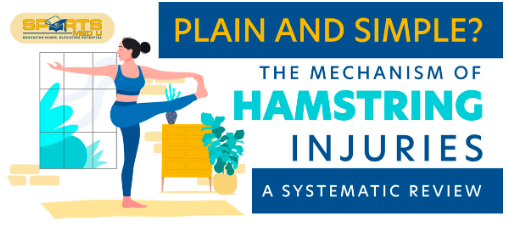
The mechanism of hamstring strain
Hamstring injuries are a prevalent issue in sports, impacting athletes across different fields. They occur at a rate of 1.2 to 4 injuries per 1000 hours of athlete exposure, highlighting their importance. In sports like athletics and football, they add ip to a whopping 17-21% of all reported injuries.
Hamstring injuries disrupt athletes’ participation and performance, leading to an average time loss of 24 days each season. Despite their frequency, the precise mechanisms behind these injuries is not fully understood.
This article aims to delve into the complexities surrounding hamstring injuries, exploring various factors such as injury mechanisms, timing, preventive measures, and implications for performance
Hamstring strain incidence and preposed mechanism
Askling et al. proposed two primary scenarios as potential causes:
1. High-speed running
2. Stretching high power movements
Interestingly, injuries from high-speed running often affect the long head of the biceps femoris, with shorter recovery times, while stretching-type injuries, typically targeting the semimembranosus muscle, usually have longer recovery periods. Dependent on sport the variation in injury occurrence differs as well, for example in Australian football, where 81% of hamstring injuries arise during sprinting, with the remaining 19% attributed to kicking.
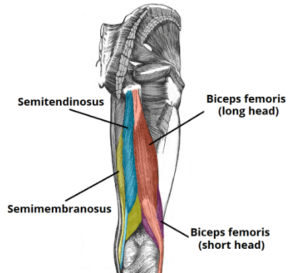
Stretch-Related Hamstring Injuries
Studies consistently show that stretch-type hamstring injuries stem from the biomechanical strain caused by extensive hip flexion combined with simultaneous knee extension. In sports like Australian football, where 19% of hamstring injuries occur during kicking, this mechanism becomes particularly relevant, as kicking involves both flexed hips and extended knees, amplifying the risk of injury.
Additionally, situations such as attempting to pick up a ball from the ground while running at full speed are identified as common triggers for hamstring injuries in sports such as rugby and Australian football.
That being said, it’s important to note that some studies rely on patient recall of injury situations, potentially introducing bias. Hence, further research is important to truly validate the observations and enhance our understanding of hamstring injuries.

Hamstring injury during sprinting: Late Swing Phase vs. Stance Phase
Contradictory findings within hamstring strains during running challenge the consensus regarding the exact timing of the injury. While the majority of studies highlight the late swing phase as the period of heightened susceptibility, primarily due to eccentric loading on the hamstrings, there’s emerging evidence suggesting that injuries may also occur during the stance phase.
Study by Schache specifically attribute hamstring injuries to the late swing phase, basing his conclusions on early signs of injury such as neuromuscular latencies, and assessing factors including hamstring length, force, velocity, and negative work.
This perspective is further supported by a recent literature review, which highlights the role of elevated muscle excitation and strain during the late swing phase. These conflicting perspectives demonstrate the complexity of hamstring injury mechanisms.
Overall, whilst specifics are still unclear, it’s safe to say that forceful contraction in a lengthened position of the muscle is the main reason hamstring injuries occur.
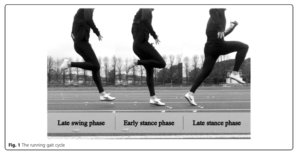
Preventive measures and hamstring injury risk
Impact of Forward Trunk Lean:
Forward trunk lean during the stance phase, especially with a fully extended knee, increases strain on hamstring muscles, resembling the stretch-type injury mechanism. This heightened strain is attributed to inadequate activation and control of core and hip muscles.
Role of Static Stretching:
Static stretching can be a potential preventive measure, reducing ground reaction forces in the early stance phase and decreasing strain on the biceps femoris long head during the late swing phase. This reduction in ground reaction forces results in diminished peak joint torque at the hip and knee, with increased force production of the biceps femoris at longer muscle lengths, suggesting that stretching may mitigate hamstring injury risks.
While static stretching shows promise in reducing hamstring injury risks, it’s crucial to assess potential performance detriments. Further exploration is needed to understand the balance between injury prevention and performance optimisation.
Nordic Hamstring Exercise:
Research on the Nordic hamstring exercise, which emphasises eccentric training, has shown effectiveness in decreasing the likelihood of hamstring injuries. This preventive benefit is attributed to the exercise’s capacity to enhance muscle fascicle length, thereby mitigating the correlation between short hamstring fascicles and heightened injury susceptibility.
Strength-Related Hamstring Injuries
It’s important to highlight the impact of fatigue, which reduces eccentric hamstring strength and increases injury risk. Comparisons between athletes with prior hamstring injuries and uninjured counterparts show diminished hamstring activation among the previously injured athletes, contributing to overall reduced hamstring strength. These findings, while not directly clarifying injury mechanisms, offer a glimpse into risk factors for subsequent injuries. Focusing on rehab programmes that are specific to the injury mechanism (i.e kicking or sprinting) sport specific movement & developing strength at fatigue can help to het the soft tissues ready for the “worst case scenario”
Follow this 5 stage protocol outlined by Teberner when returning athletes to sport.
Last words
Hamstring injuries are challenging for athletes and sports medicine professionals. While preventive measures such as static stretching and eccentric training show promise in mitigating injury risks, it’s essential to balance these interventions with considerations for performance optimisation.
Additionally, retrospective studies examining hamstring strength provide valuable insights into risk factors and rehabilitation strategies. As research progresses in understanding the precise mechanisms of hamstring strain injuries, the primary takeaway is that forceful contraction in a lengthened muscle position is a major contributing factor to these injuries
Source
- Askling, C.M., Tengvar, M., Saartok, T. and Thorstensson, A., 2008. Proximal hamstring strains of stretching type in different sports: injury situations, clinical and magnetic resonance imaging characteristics, and return to sport. The American journal of sports medicine, 36(9), pp.1799-1804.
- Askling, C.M., Malliaropoulos, N. and Karlsson, J., 2012. High-speed running type or stretching-type of hamstring injuries makes a difference to treatment and prognosis. British journal of sports medicine, 46(2), pp.86-87.
- Danielsson, A., Horvath, A., Senorski, C., Alentorn-Geli, E., Garrett, W.E., Cugat, R., Samuelsson, K. and Hamrin Senorski, E., 2020. The mechanism of hamstring injuries–a systematic review. BMC musculoskeletal disorders, 21, pp.1-21.
- Kenneally‐Dabrowski, C.J., Brown, N.A., Lai, A.K., Perriman, D., Spratford, W. and Serpell, B.G., 2019. Late swing or early stance? A narrative review of hamstring injury mechanisms during high‐speed running. Scandinavian Journal of Medicine & Science in Sports, 29(8), pp.1083-1091.
- Schache, A.G., Wrigley, T.V., Baker, R. and Pandy, M.G., 2009. Biomechanical response to hamstring muscle strain injury. Gait & posture, 29(2), pp.332-338.



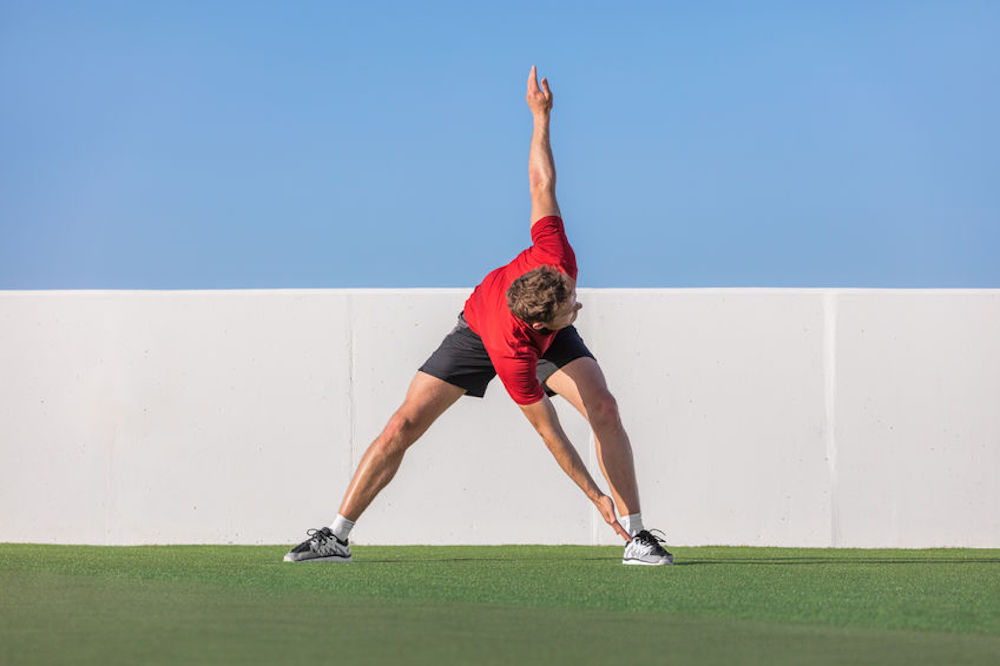
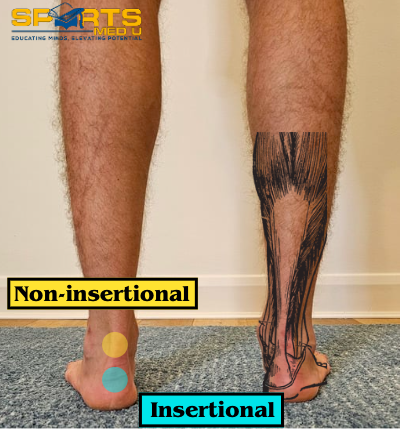

Leave a Reply